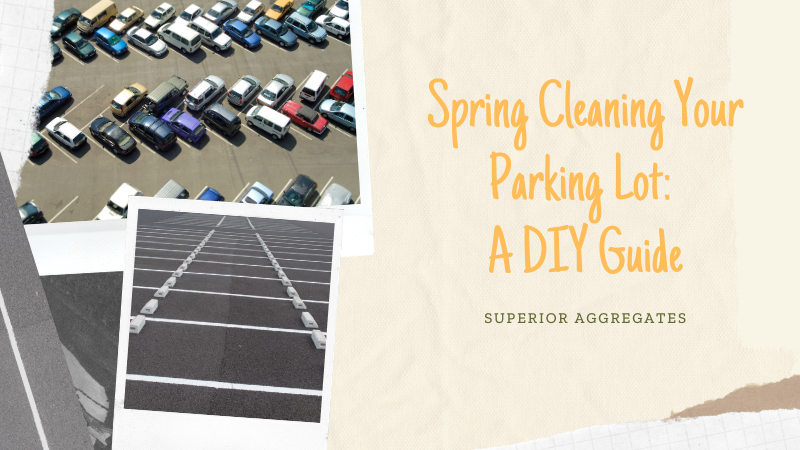
Spring Cleaning Your Parking Lot: A DIY Guide
Keeping a run down and the disheveled parking lot is a risky proposition. Holes in the asphalt can cause blown out tires, which is a nuisance and can lead to unnecessary tire repair requests. Customers tripping and falling on your property is even worse because they might hurt themselves and potentially sue for damages.
To avoid these scenarios, it’s best to focus on asphalt maintenance and repair. Tackle this project during the warm spring months to get your parking lot up to snuff. And then focus on maintenance to keep your property looking pristine and in good repair.
1. Regular Asphalt Cleanings Are an Absolute Must.
Cleaning your parking lot is about more than presenting an attractive appearance. While it’s certainly nice to keep a clean lot for your customers, cleaning and maintaining your lot will go a long way toward preserving the durability and lifespan of your asphalt.
Start by removing and eliminating all surface debris. Get rid of the garbage, leaves, and other trash and refuse built up marring the surface of your parking lot. By removing this gunk and debris on a regular basis, you’ll prevent damage and unsightly stains from ruining your attractive asphalt parking lot floor.
2. Fix Unsightly Potholes Using Proper Asphalt Repair.
Potholes are going to happen whether you like it or not. When water works its way underneath the pavement’s surface, it expands and contracts and gets underneath in the groundwater. This creates potholes that will otherwise ruin your asphalt.
Proper asphalt repair means completing the pothole repair process. This process consists of four steps and is simple enough for every DIY expert looking to save a couple of bucks by making the repairs themselves.
The 4 step process to fix potholes includes:
- Cleaning out the pothole by removing unnecessary and unwanted dirt and debris that gets underneath the pavement. This debris can otherwise weaken a pothole repair.
- Heating up the pothole is necessary for the elimination of excess moisture. Getting rid of this extra moisture from beneath the payment makes it possible to apply new asphalt.
- Putting new asphalt in the pothole is the third step. For the most part, hot mix asphalt is the ideal choice to perform this repair. After applying it in the hole, you should compact the asphalt to increase resistance and ensure water reduction.
- Cooling the new asphalt is the fourth and final step. If more debris is discovered around or near the repair, please remove it at this time.
All in all, it’s typically okay to drive on repaired potholes immediately after fixing the problem. So don’t worry about cordoning off the area because it’s an unnecessary inconvenience at best.
3. Sealcoating Is an Excellent Choice for Asphalt Maintenance.
Sealcoating is a powerful way to prolong the health and lifespan of your asphalt parking lot. Why? Simply put, it fills in the damaged areas on the surface by providing a protective coating.
Sealcoating is perfect because it prevents water damage, damage from vehicle fluid, and it even stops harm from powerful UV rays dead in its tracks. To achieve the best results with seal coating, you should apply a new coat every 3 to 5 years to gain maximum surface protection.
Each new seal coating application means giving your surface a fresh and updated look. It’s also the perfect way to guarantee proper asphalt maintenance.
Recap
In conclusion, please remember that parking lot of spring cleaning and maintenance is a must to keep your asphalt in excellent condition. Always remember to clean the surface, repair potholes as they pop up, and apply seal coating every 3 to 5 years to ensure proper maintenance and asphalt repair. If you follow these guidelines, your parking lot will maintain an attractive appearance for many years to come.
